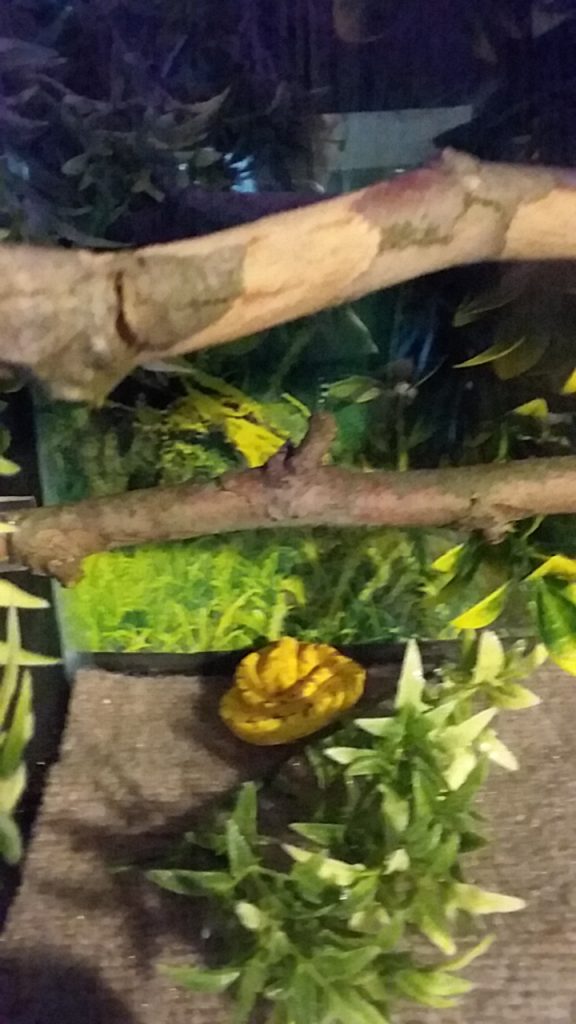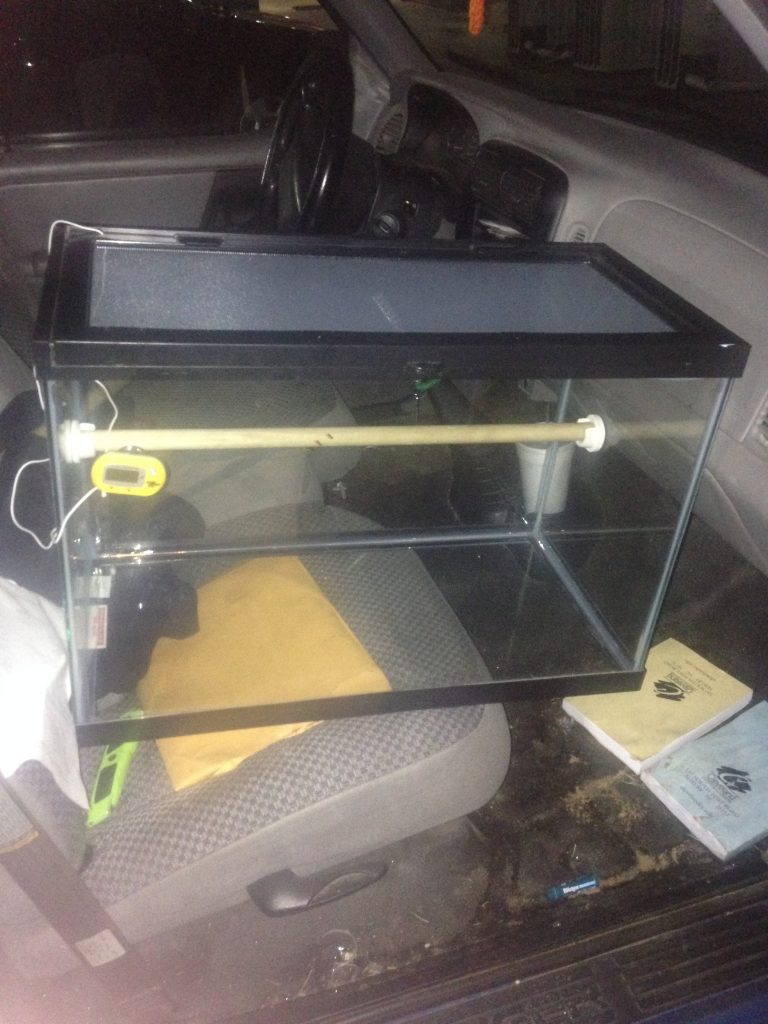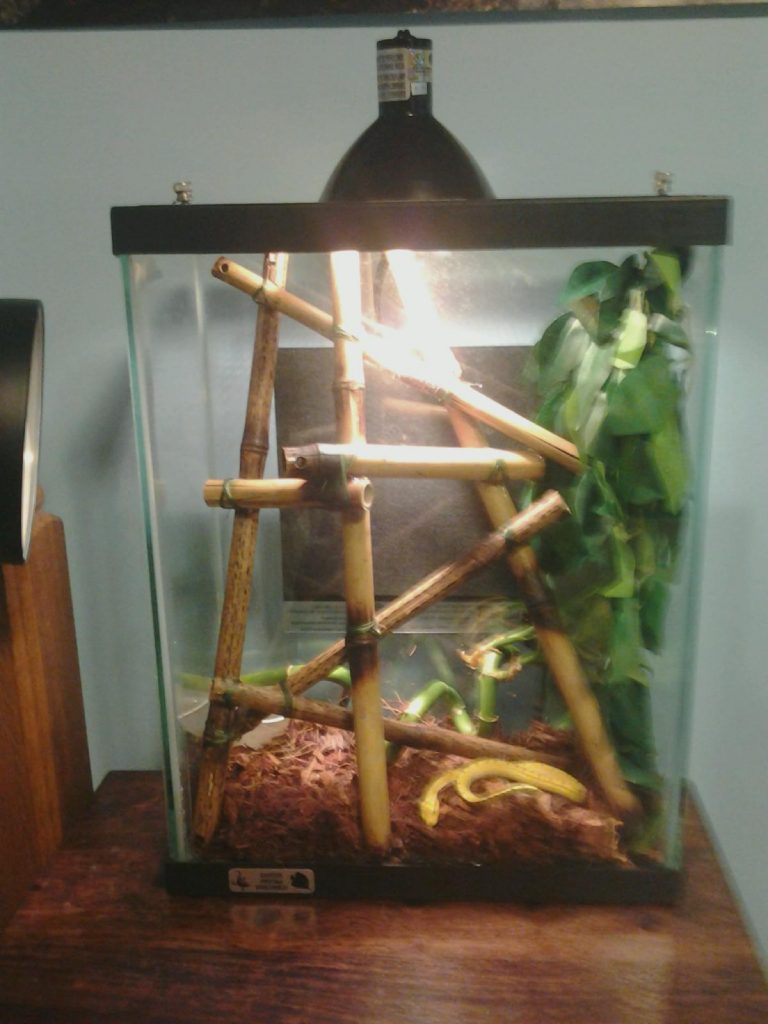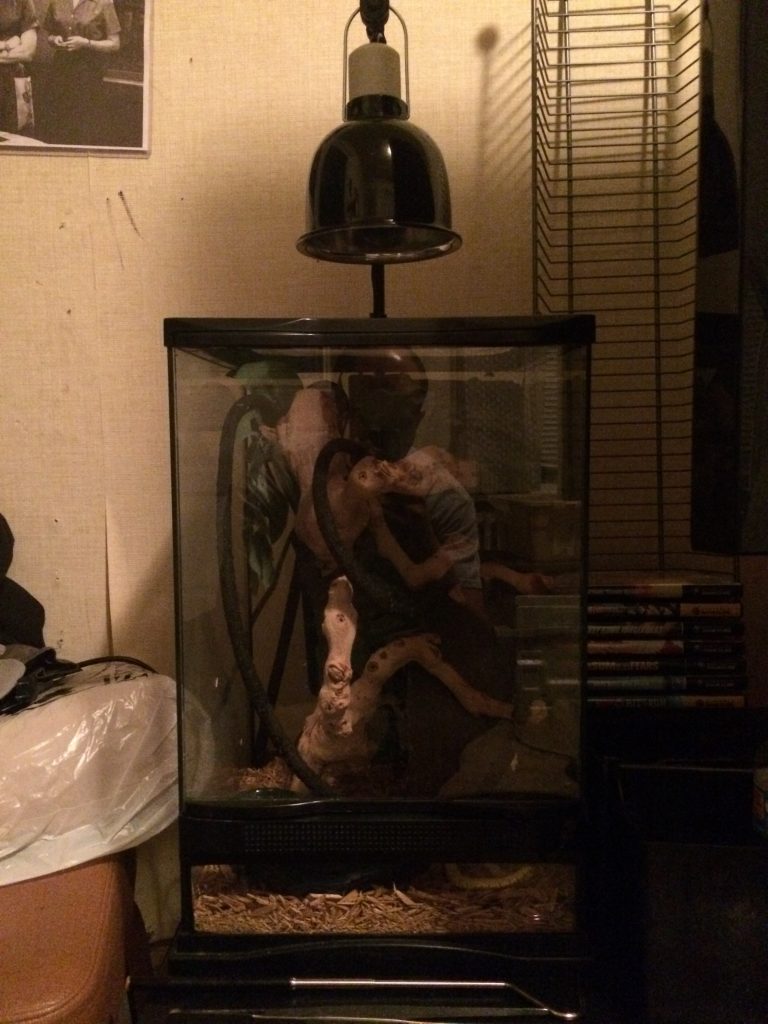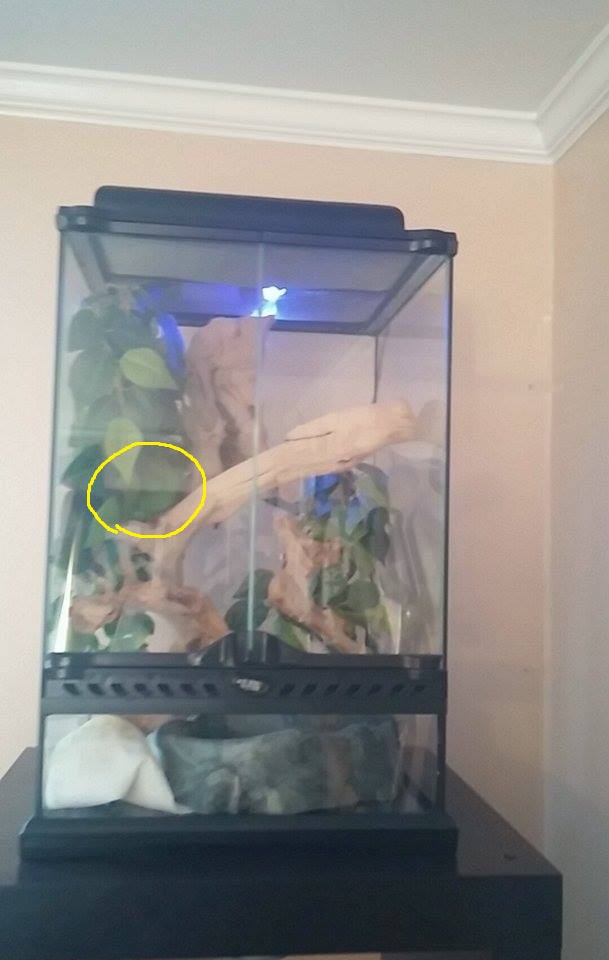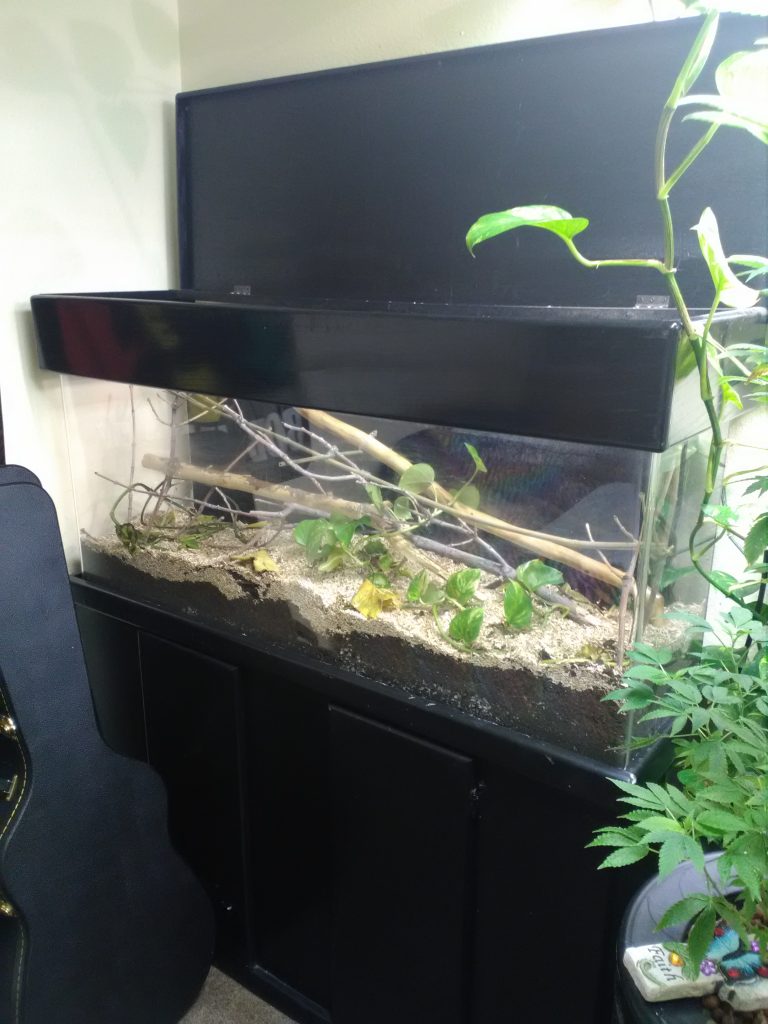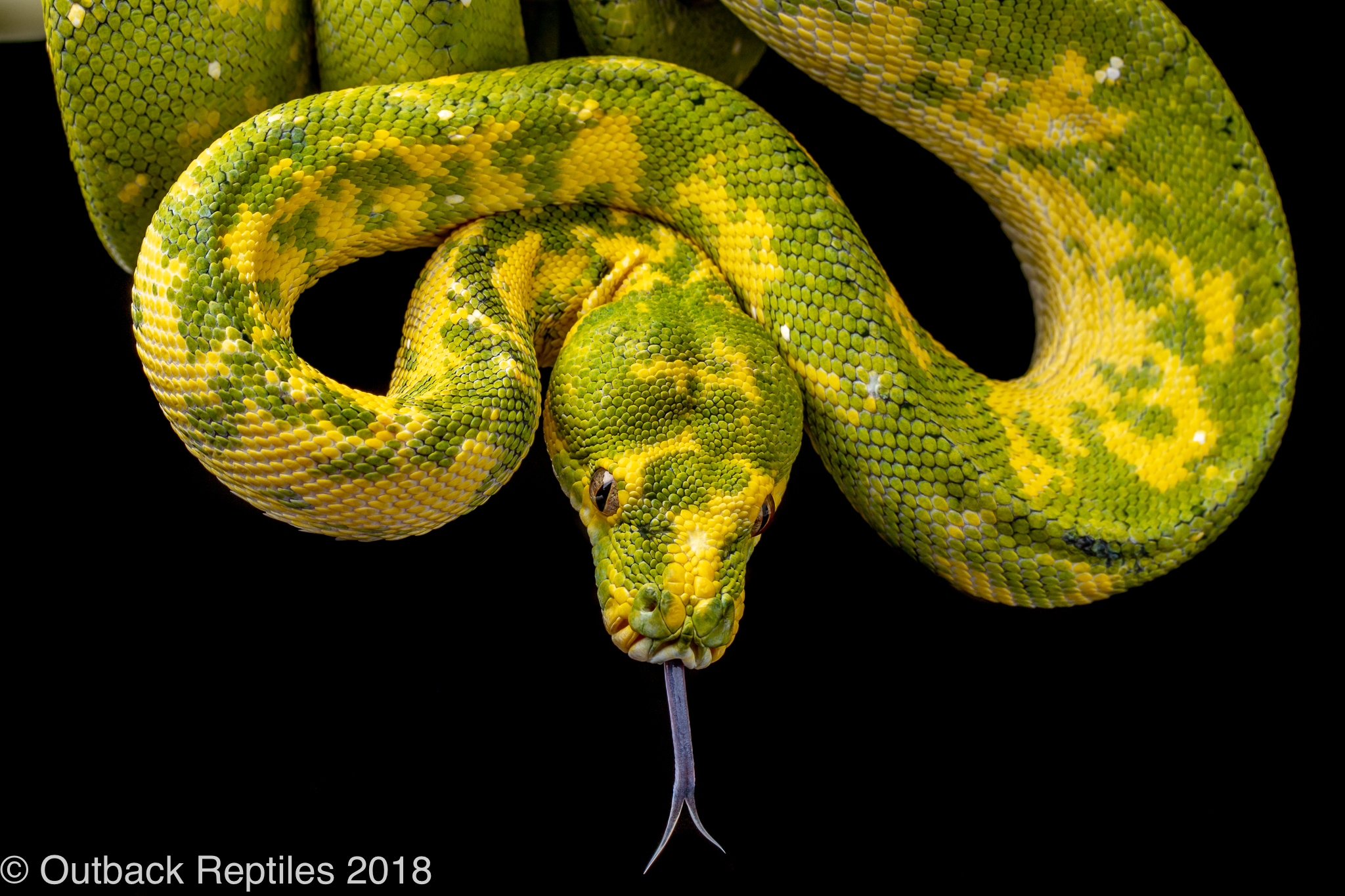What sort of tank should I get for my Green Tree Python? The short answer is NO! Here’s why I recommend against glass tank setups (Sorry Exo-Terra, ZooMed, etc – your tanks are great for geckos and frogs) and what I’d suggest instead.
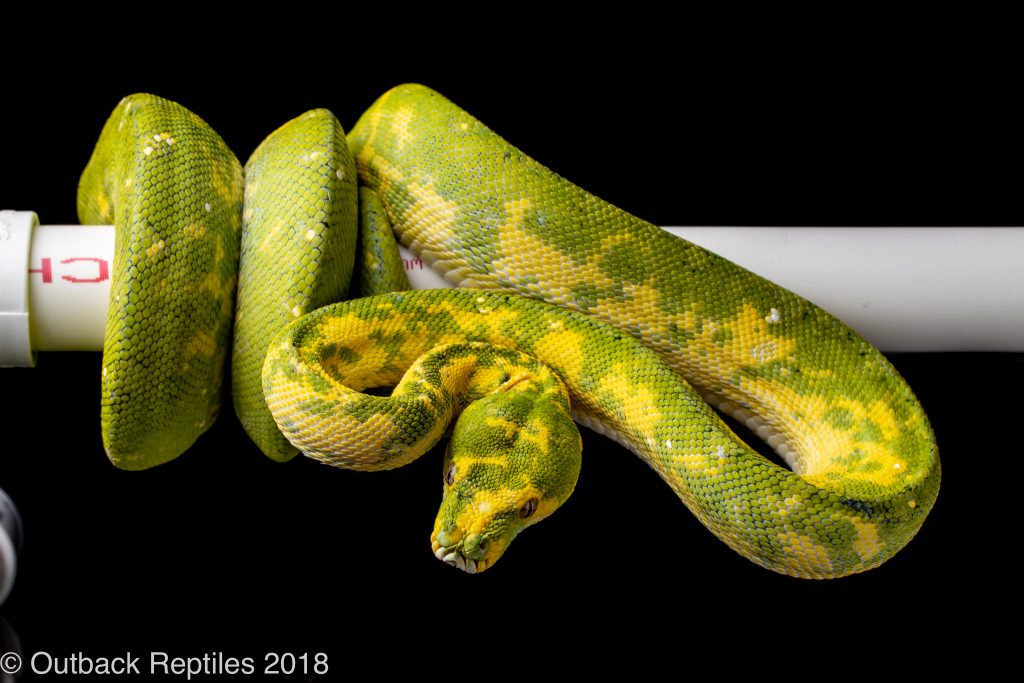
Green Tree Pythons (Morelia viridis, sometimes referred to as Chondros) are not an especially difficult species to keep. Many may argue with me on this topic, but I always say- if you think keeping something alive is difficult, you aren’t doing it right or you haven’t had enough experience yet. Green Tree Pythons are not necessarily any harder to keep than most other tropical snakes – the environmental requirements are similar, feeding them is not usually very difficult, and proper caging isn’t super advanced to set up. For whatever reason though, many seem to be unable or unwilling to follow a few simple guidlines. In this little editorial I am going to assume you know the very basics of Green Tree Python care, but just aren’t quite sure why people recommend against those awesome looking Exo-Terra tall tank setups (that look so perfect!)
The difference between Green Tree Pythons and other snakes, and the reason many people have trouble with them, is not that they require any crazy conditions in order to thrive – it’s that they are a lot more sensitive to deviation from their normal requirements than many other, hardier reptiles. In laymen’s terms- if you mess up something with their care, they are a lot more likely to react negatively than, say, a Ball python, which tend to be very resilient and tolerant of husbandry errors. Your Ball Python’s cage temperatures dropped into the 50s and 60s for a bit because you had the front door open for two hours while moving new furniture into the house in December? Not good, but your snake will probably be just fine provided the error is detected and corrected fairly quickly. If that same temperature fluctuation occurs in your Green Tree Python setup, it could very likely be the end of that snake’s run on this planet.
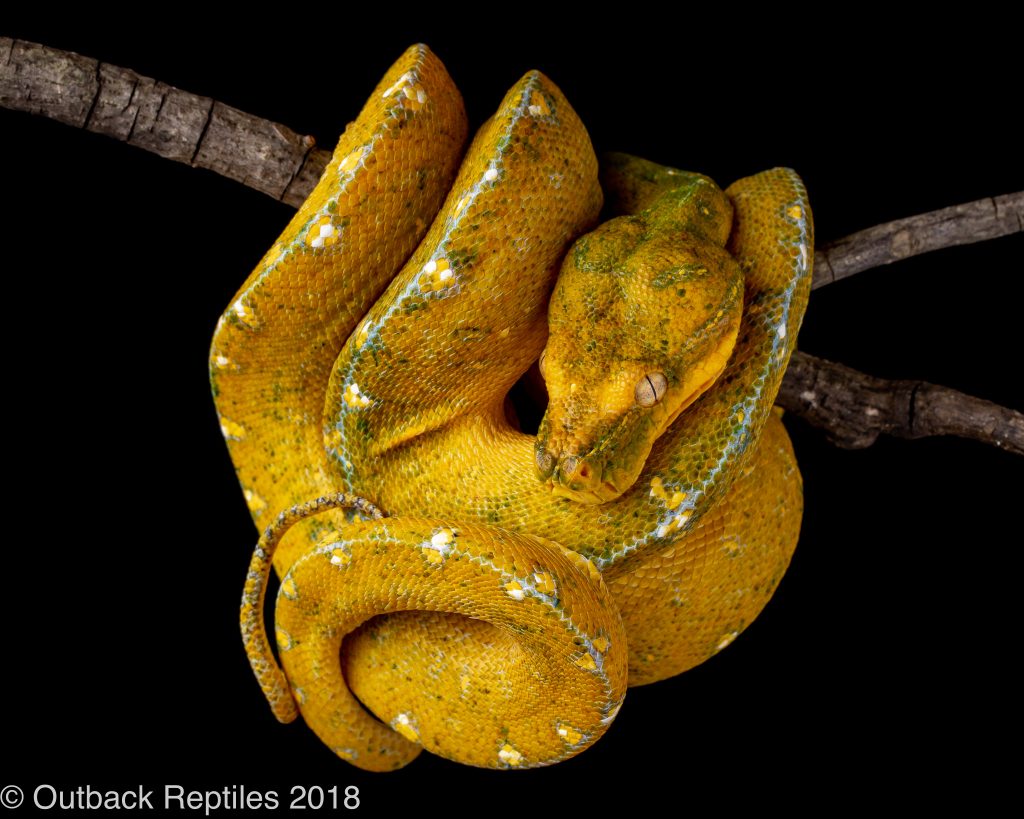
A proper Green Tree Python setup is stable and insulated/isolated from too many outside stimuli. This is why I absolutely hate glass tank type setups for them – they provide basically zero benefits in terms of insulating your animal from mishaps and the outside world, and they are not very good at establishing a separate, controlled habitat inside the normal living conditions in your home.
So before I get too far into this anti-tank crusade of mine, most of this information will apply to probably 95% of casual reptile keepers who do not have a special climate controlled room specifically for their animals – if you do have a warm, humid, reptile room then this won’t necessarily apply (as much). If your room is heated and humidified, then all the cage is really doing is containing your snake at that point.
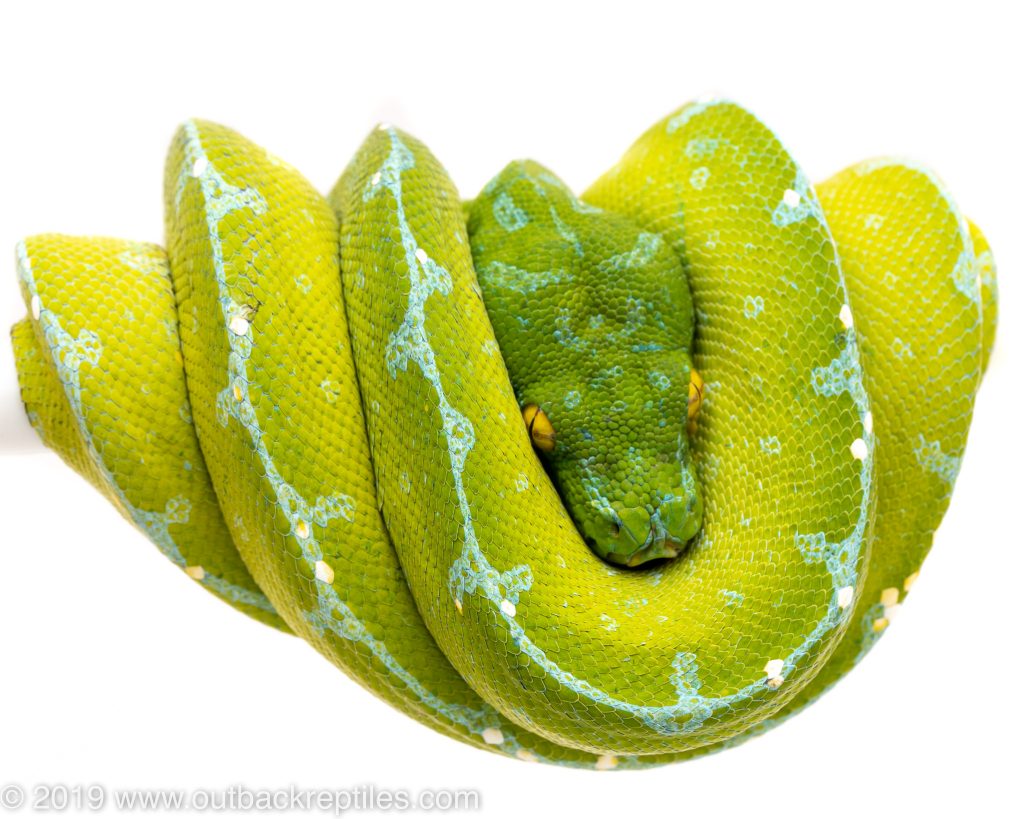
So, here’s why I think tanks suck.
First, single pane glass is not a great insulator. Your heat source, whatever it may be – a heat pad stuck to the bottom or side of the tank, a radiant heat panel, heat cable, ceramic heat emitter, or (god forbid) a heat lamp, will have to work a lot harder to keep temperatures stable inside that environment when the majority of the heat is escaping through the glass walls of your terrarium. Assuming your house is around 70 degrees, the heat source is going to need to be a lot hotter in order to maintain the proper environment. This means your heater might be cranking out at 90, 95, or 100 degrees just to keep the cage the right temperature in the mid 80s.
This will create an environment that is very unevenly heated. A gradient throughout the terrarium is great – but having a huge fluctuation from very hot under the heat source, to much too cold in the areas of the enclosure that are far away from the heat source, is basically a recipe for an upper respiratory infection. Your snake’s immune system will be taxed from having to deal with the wild temperature swings, and the humidity in the environment will likely be very difficult to maintain as well.
What does this have to do with humidity? Well, basic physics has a lot to do with it. Basic middle school fact: warmer air rises. As your heat source works overtime to reach the right temps in your poorly insulated cage, that warm air rises out of the top of the tank (which is likely screen if you went with one of those tall, front-opening glass terrariums like Exo-Terra or ZooMed). This hot air rises out the top, drawing more cold air into the tank, which perpetuates this weird draft cycle that basically dries out the cage like a commercial meat dehydrator. Unless you’re in the business of selling Python jerky, this is counterintuitive to your success.
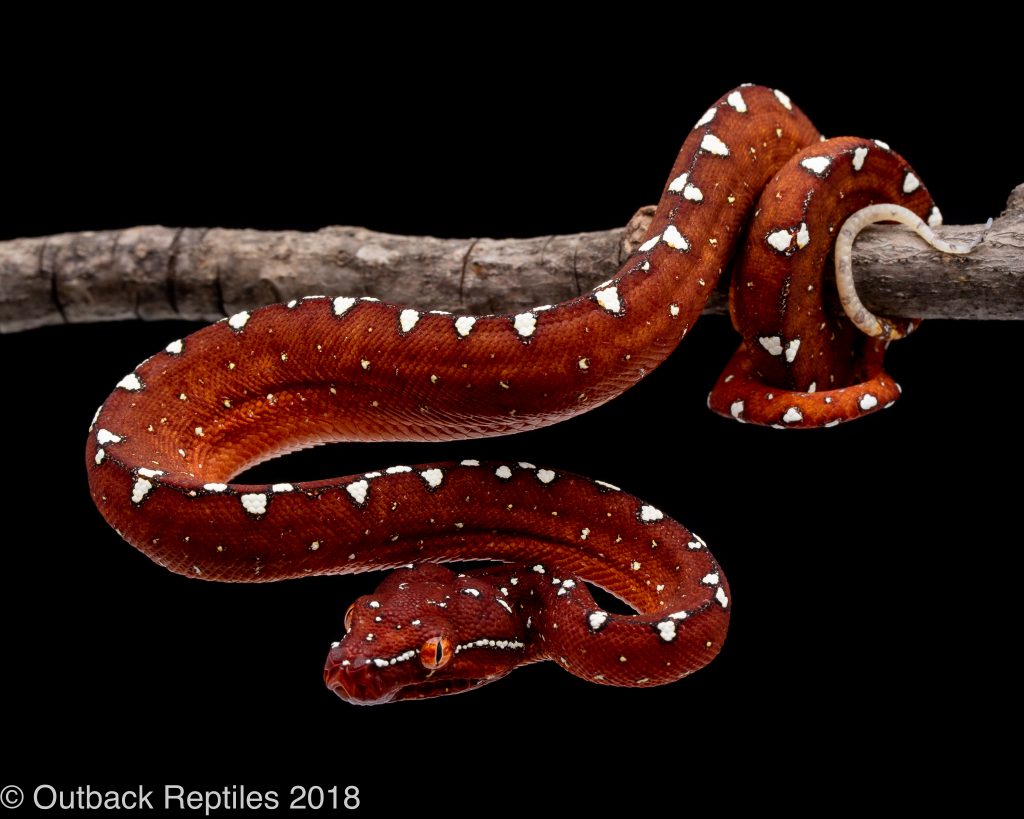
So besides being drafty, terrible at holding heat and awful at maintaining humidity – tanks are actually good at one thing – displaying your awesome pet from all angles! Unfortunately this isn’t necessarily a good thing for your Green Tree Python. Most arboreal snakes tend to be pretty shy, secretive creatures, and Chondros are no exception. The vast majority will prefer not to feel like they are sitting out in the open where they are vulnerable to predators (nonexistant as they may be in your home, your snake doesn’t know that). A wide open glass tank with perches spaced throughout might be fine for some less nervous animals, but many might not feel very comfortable hanging out like that. And an uncomfortable, stressed out animal will feed poorly and is more likely to become sick, especially when compounded with the other previously discussed problems associated with this environment.
So what if we fix these problems? Cover up the screen top, insulate and block out the sides and back of the enclosure? Well at this point, you’ve probably spent about as much converting your subpar tank into a useable enclosure, than you would if you just bought a proper setup in the first place – and a nice ready-made cage will look much better than your franken-tank will, anyways.
For adult or subadult chondros I’d suggest grabbing a PVC or Wooden enclosure from the wide array of vendors who build them specifically for reptiles. The thicker walls and better materials will insulate better, block out line of sight from the sides, top, and back, and maintain that tropical humidity you want in there as well. Many of them are designed to look sleek and professional, and some manufacturers can even customize the enclosure to your exact specifications.
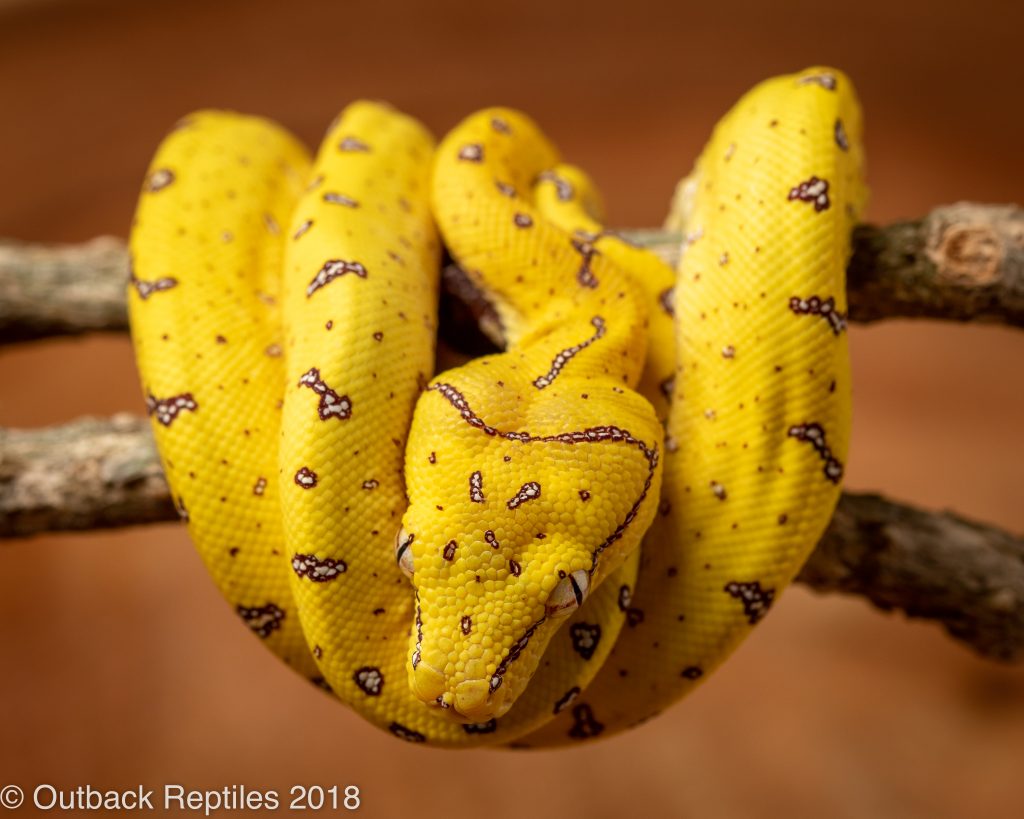
These wooden or plastic cages are also great because the solid ceiling of the enclosure makes it very easy to mount a radiant heat panel, which I prefer for my arboreal snakes. I’ve determined that out of the many options, this seems to be the best way to heat them. Radiant heat panels “radiate” gentle heat underneath, that simulates natural sunlight in a much gentler way than a light bulb will. Two thumbs up for Radiant Heat!
I keep baby Green Tree Pythons in 6 qt bins in an enclosed plastic rack system and they thrive. This keeps them safe and secure and easy to keep track of. These 6 qt bins are also great because the perch is only a few inches above the bottom of the tub, making it easier for your baby Chondro to find its meals and water dish.
So to leave you on a high note, here are some horror story photos that actual customers have sent me. Please don’t do this. Beware:
